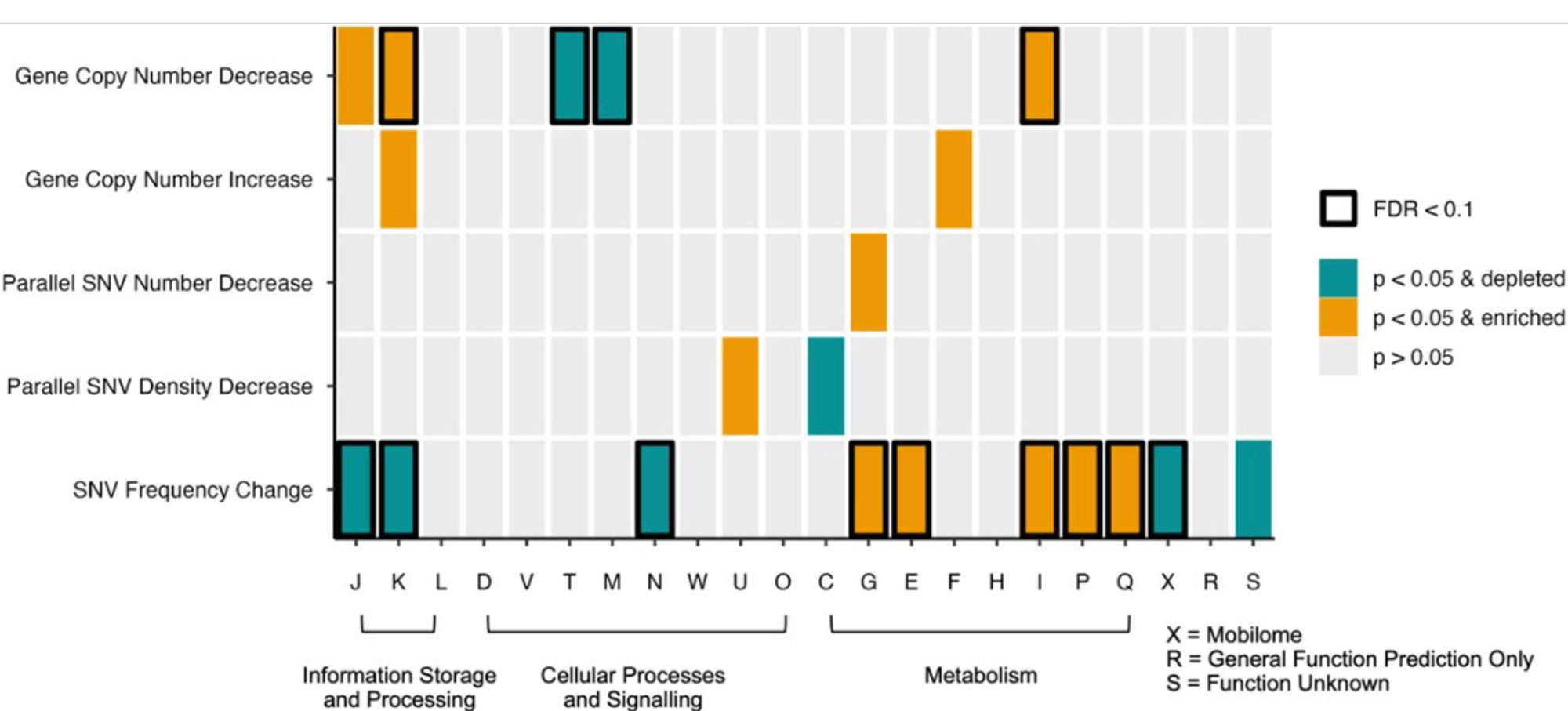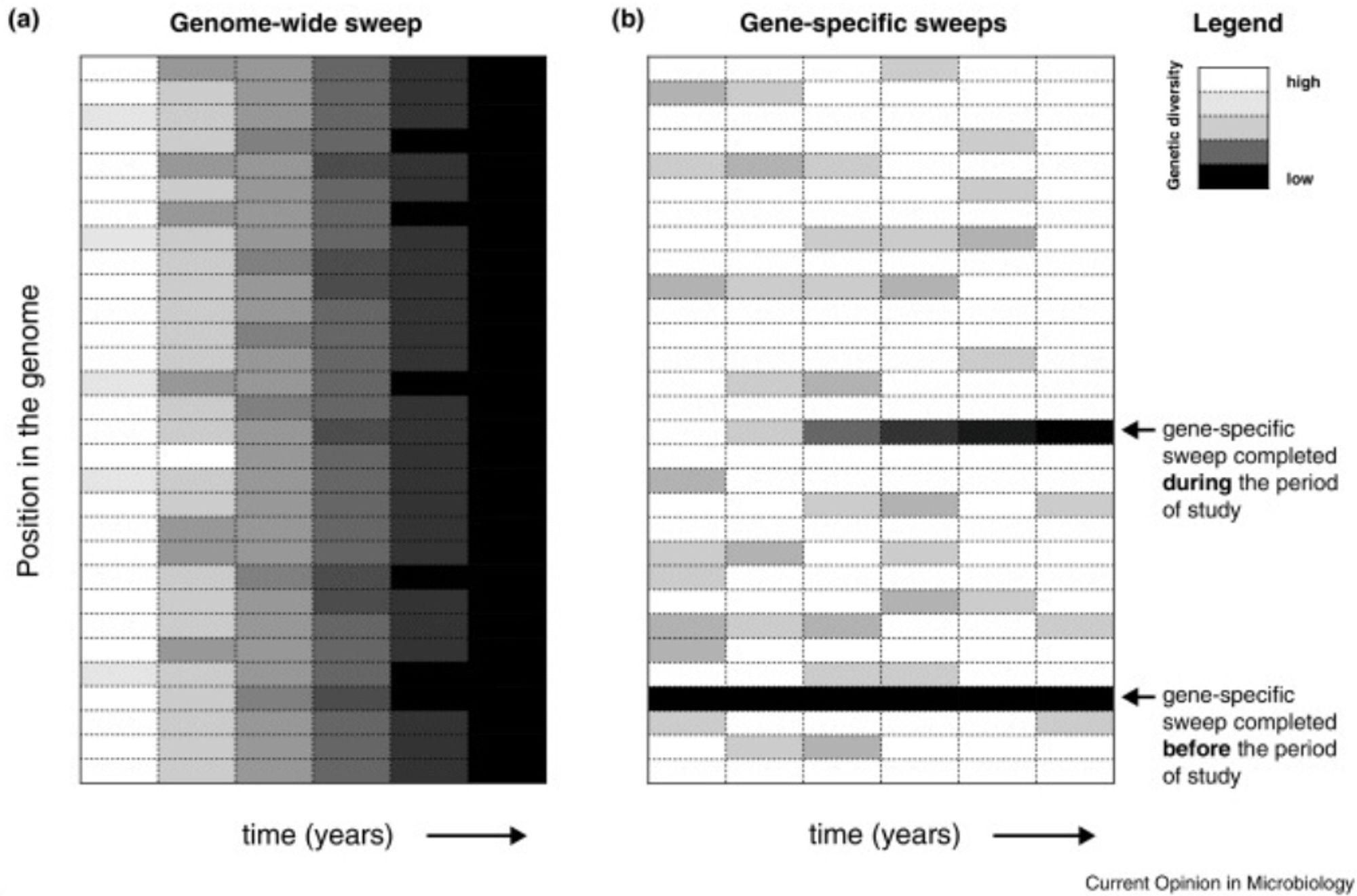
Across all 11 species, we see an enrichment of selection on genes involved in metabolism. Notably, amino acid transport & metabolism is particularly enriched in species predicted to be resistant to glyphosate, which targets an amino acid synthesis pathway. 13/n

So genome-wide sweeps may be rare, or not very repeatable on these short time scales. Can we still find genes targeted by selection? Yes! Using 5 different methods, we find a bunch of candidate genes with parallel SNV changes, allele frequency changes, or copy-number variations in treated ponds.
Comparing controls to Roundup ponds after 4 weeks, there was little evidence for complete genome-wide sweeps, which would look like big blocks of either yellow or dark blue (fixed alleles) in treated ponds. Instead, we see a mix of colours, showing that genome-wide diversity is maintained. 11/n

Within-species diversity was pretty high (hundreds to thousands of single-nucleotide variants; SNVs) per megabasepair, but was not correlated with species richness. 10/n

As expected, the glyphosate-based herbicide (GBH) Roundup affects community diversity, cutting species richness in half! We were also able to measure within-species diversity in 11 metagenome-assembled genomes (MAGs) recovered from both Roundup-treated ponds and controls. 9/n

Based on previous experiments, we knew that Roundup selects for ‘ecological’ changes in the bacterioplankton community composition. Now we wanted to know if it also selects for changes within species, aka evolution. 8/n onlinelibrary.wiley.com/doi/abs/10.1...journals.asm.org/doi/full/10....
As a midpoint between natural diversity with unknown selective pressures and lab experiments, we settled on a freshwater mesocosm communities faced with a known selective pressure (the herbicide Roundup) compared to controls. Superfluous LEAP music video :P www.youtube.com/watch?v=u6ga... 6/n

YouTube video by Andrew Gonzalez
There is surprisingly little evidence for genome-wide selective sweeps in nature. In a cool study, @quendi.bsky.socialpubmed.ncbi.nlm.nih.gov/26744812/

Multiple models describe the formation and evolution of distinct microbial phylogenetic groups. These evolutionary models make different predictions regarding how adaptive alleles spread through popul...
Why does this matter? On a fundamental level, if gene-sweeps are common, we can think of genes rather than genomes as the entities that inhabit ecological niches. More tangibly, if genome-wide diversity is frequently purged, this could affect bacterial community structure via evo-eco feedbacks. 4/n
Here’s a cartoon contrasting genome-wide vs. gene-specific selective sweeps from a little review I wrote a while back: www.sciencedirect.com/science/arti...

